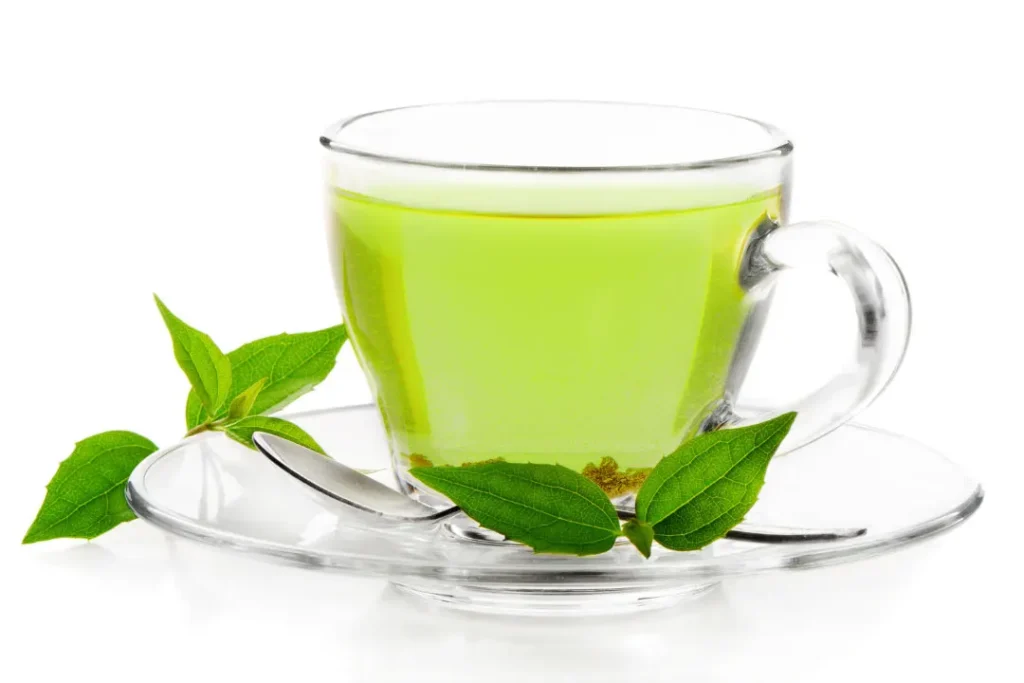Calea Zacatechichi, sometimes referred to as “Dream Herb” or “Bitter Grass,” is a plant species that is native to Mexico and Central America. Indigenous tribes have utilized this plant for its alleged dream-enhancing and divination abilities. Despite its long history of psychoactive usage, this plant’s component substances have only recently been the subject of scientific study, and our knowledge of its effects, advantages, and possible concerns is continuously developing. The chemistry of Calea Zacatechichi, its physiological processes, health advantages, ideal dose, side effects, and possible drug interactions are all thoroughly reviewed in this article.
You May Also Like:
Brain Pill Reviews: Leading Edge Health vs. MyPEAK Supplements
Cognitive Health Extra Strength Supplement vs Medicine Man Plant Co.’s The Brain Pill
Nature of Calea Zacatechichi
The flowering plant calea zacatechichi, often called “Dream Herb” or “Bitter Grass,” is mostly found in Mexico and Central America. Native American societies have long employed this perennial plant, which is a member of the Asteraceae family, for its purported dream-enhancing and mildly hallucinogenic abilities. It often grows in tropical environments and has little white blooms.

Health Benefits
With little evidence from early scientific study, the health advantages claimed to calea zacatechichi mostly come from its traditional usage in indigenous medicine. The herb has been used to improve memory, encourage lucid dreaming, and treat digestive problems, insomnia, and anxiety. It’s important to remember that controlled clinical trials still need to be conducted in order to confirm these results concretely.
Recent studies with animals and calea zacatechichi animal have produced encouraging findings. For instance, mice treated with the plant slept longer, indicating possible benefit in treating sleep problems. Other studies with mice conclude the plant may have valid antidiarrheal properties, which may help those who suffer from IBS or other gastrointestinal issues. In vitro research has also shown anti-inflammatory and cytotoxic effects, indicating potential uses in the treatment of inflammation and cancer.


Chemical Composition
Calea Zacatechichi is contains a number of bioactive substances. Sesquiterpene lactones like calein and caleicine, flavonoids, and germacranolides are prominent examples of these. Particularly caleein and caleicine have been suggested as the main active ingredients in charge of the plant’s pharmacological effects.
Research on calea zacatechichi’s precise method of action on the body and brain is still underway. Sesquiterpene lactones, however, may interact with the central nervous system (CNS) via a variety of mechanisms, according to certain research. One of the most prevalent inhibitory neurotransmitter receptors in the CNS, the gamma-aminobutyric acid (GABA) receptor, has demonstrated affinity for several of these substances. Given that GABAergic activity is linked to the control of sleep and anxiolytic effects, this may explain the plant’s sedative and hypnotic properties.
Sesquiterpene lactones, flavonoids, and germacranolides are only a few of the bioactive substances that are abundant in the leaves of the calea zacatechichi plant. The sesquiterpene lactones calein and caleicine are thought to be the main active components in charge of the plant’s pharmacological actions. The plant’s distinctive bitter flavor is derived from these chemicals, thus the name “Bitter Grass.”
Physiological Mechanism
It is still not completely known how calea zacatechichi works physiologically. The central nervous system (CNS) is assumed to interact with the active components. The sesquiterpene lactones found in the plant, in particular, have been shown to exhibit affinity for the gamma-aminobutyric acid (GABA) receptor, a common inhibitory neurotransmitter receptor in the central nervous system (CNS). Given that GABAergic activity is crucial for controlling sleep and lowering anxiety, this interaction may help explain the plant’s purported calming and hypnotic properties.


Optimal Dosage
The lack of clinical research makes it difficult to establish the ideal dose for calea zacatechichi. Traditional use, however, may provide some direction. In most cases, the herb is smoked or drunk as a tea in quantities of 1-3 grams of dried leaves. Some people may take it orally in the form of capsules, with usual dosages falling between 250 and 500 mg. These dosages should only be seen as suggestive; further study is required to determine the best levels and determine the long-term safety.


Side Effects and Safety Considerations
When used sensibly and sparingly, calea zacatechichi is usually regarded as safe. However, adverse reactions including nausea, vomiting, and a feeling of “mind racing” have been documented. This is a common adverse symptom of psychoactive plants, no matter how mild.
Furthermore, some people may have altered sleep patterns and resulting exhaustion throughout the day due to the plant’s effects on dream states. When taken as a tea, the herb’s harsh flavor is another typical complaint.
It is important to highlight that calea zacatechichi’s safety profile is not thoroughly established, especially with regard to long-term usage or use in certain groups, such as children, pregnant or nursing women, or those who have pre-existing medical issues. As a result, it is suggested that you exercise caution and speak with a healthcare professional before using a supplement.


Potential Substance Interactions
Given that calea zacatechichi may interact with the GABAergic system, it is possible that it will also interact with other drugs that affect this system. Examples of such drugs include alcohol, benzodiazepines, barbiturates, and several anticonvulsants. These combinations could make sedative effects stronger, resulting in oversedation or impairment. Your best option is to avoid these drugs in conjuction with calea zacatechichi to avoid the consequences of oversedation.
Additionally, the plant’s potential anti-inflammatory activity raises the possibility of interactions with anti-inflammatory medications, which potentially might result in effects that are either increased or decreased. To validate and comprehend the clinical importance of these interactions, which are primarily theoretical and unproven, more study is needed.
Best Responsible Use of Calea Zacatechichi
It is crucial to handle calea zacatechichi consumption cautiously since science doesn’t fully comprehend it. Smoking or creating a tea from 1-3 grams of dried leaves is common historical practice. Alternatively, 250–500 mg of the dried leaves are also utilized as capsules. However, owing to the paucity of clinical studies on the plant, these dosages—which are based on conventional wisdom—should not be regarded as being infallible.
When taken sensibly and sparingly, calea zacatechichi is usually regarded as safe. There have been reports of possible adverse effects, including nausea, vomiting, disrupted sleep patterns, and a feeling of “mind racing.” As a result, it is advised to begin with a modest dosage and gradually raise it if necessary and acceptable. Importantly, before taking this supplement, anyone with pre-existing medical issues, women who are pregnant or nursing, and children should speak with a healthcare professional.
Given that calea zacatechichi may interact with the GABAergic system, care should be used when combining it with other substances that affect this system, such as alcohol and other drugs like benzodiazepines and barbiturates.
Calea zacatechichi has promise for its traditional usage and potential health advantages, but its use should be handled appropriately given the absence of a complete scientific knowledge of its effects, ideal dose, and long-term safety. These details must be clarified in further detail in order to establish the plant’s potential medicinal efficacy.
Calea Zacatechichi:
Conclusion
With its vast background as a method of healing and insight for indigenous tribes in Mexico and Central America, calea zacatechichi offers a potential new way to treat common conditions like irritable bowel syndrome and anxiety. Those who have not found relief through traditional methods can try to utilize this plant either in tea form or with supplements before bed in order to dispel poor sleep. Though research on the plant is limited somewhat, experimenting with calea zacatechichi can be done safely under the supervision of your primary physician. Consult with your healthcare provider to find the right dosage to fit your lifestyle and prevent negative interactions with barbituates, alcohol, and other psychoactive substances.
References:
- “Calea Zacatechichi: Everything You Need To Know”. Retrieved From: https://www.zamnesia.com/blog-calea-zacatechichi-everything-you-need-to-know-n2146
- “Dream Herb (Calea Zacatechichi) Guide: Effects, Common Uses, Safety”. Retrieved From: https://www.verywellmind.com/dream-herb-4766867
- “Effects of Calea Zacatechichi aqueous extract on rat performance in the holeboard test”. Retrieved From: https://www.scielo.br/scielo.php?pid=S0100-879X2006000600014&script=sci_arttext
Important Note: The information contained in this article is for general informational purposes only, and should not be construed as health or medical advice, nor is it intended to diagnose, prevent, treat, or cure any disease or health condition. Before embarking on any diet, fitness regimen, or program of nutritional supplementation, it is advisable to consult your healthcare professional in order to determine its safety and probable efficacy in terms of your individual state of health.
Regarding Nutritional Supplements Or Other Non-Prescription Health Products: If any nutritional supplements or other non-prescription health products are mentioned in the foregoing article, any claims or statements made about them have not been evaluated by the U.S. Food and Drug Administration, and such nutritional supplements or other health products are not intended to diagnose, treat, cure, or prevent any disease.
